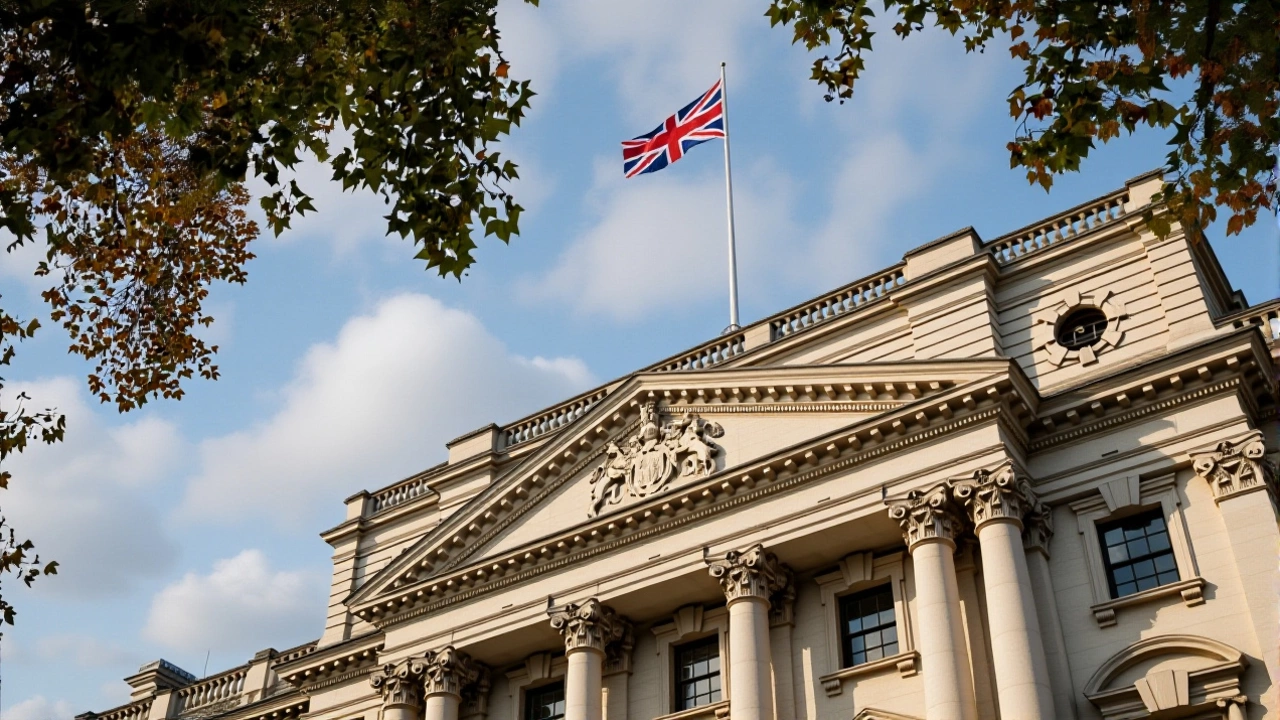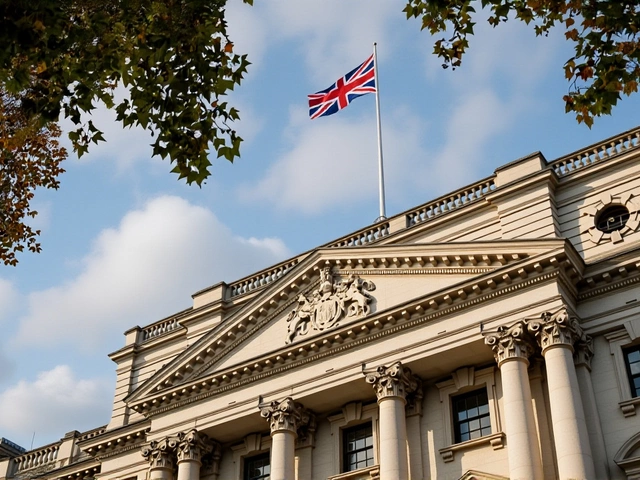On Wednesday, November 26, 2025, Chancellor Rachel Reeves will announce a major shift in UK savings policy: the annual Cash ISA allowance will drop from £20,000 to £12,000 — a 40% reduction — while the controversial Brit ISA plan is officially scrapped. The move, part of the Autumn Budget 2025London, comes after months of fierce debate, behind-the-scenes lobbying, and alarming economic projections from the Building Societies Association (BSA). The decision marks a pivotal moment in how the UK government views personal savings, investment, and the role of retail finance in national economic stability.
Why the Cut? The Treasury’s Logic
The government’s stated goal is simple: get more Britons to invest in UK companies. With domestic stocks languishing and foreign buyers snapping up British firms at discounted prices, officials hoped to redirect £1.2 trillion sitting in cash savings — much of it in ISAs — toward the London Stock Exchange. The Brit ISA, initially floated by former Chancellor Jeremy Hunt, would have required savers to allocate 20–25% of their ISA funds to UK equities. But after weeks of consultations with fund managers, platforms like AJ Bell, and investment firms, the idea collapsed under its own weight. "Many established platforms already had strong UK offerings," said one insider. "The Brit ISA felt like a solution to a problem we didn’t have."Industry Alarm: Building Societies Sound the Alarm
The Building Societies Association (BSA), representing 42 UK building societies, 2 mutual banks, and 7 credit unions, didn’t mince words. Andrew Gall, Head of Savings at the BSA, called the proposed cut "counterproductive" to the very goal of fostering an investment culture. Their analysis showed that slashing the Cash ISA limit to £5,000 — an earlier, more extreme version — could cost the economy £7 billion in GDP over five years and result in 17,000 fewer mortgage approvals annually. Even at £12,000, the BSA warns of reduced lending capacity. "Cash ISAs aren’t just savings accounts," Gall explained. "They’re the lifeblood of our lending model. When savers park money here, we lend it out to homebuyers. Cut the pool, and you cut the flow." The Treasury Select Committee echoed those concerns. In a report last month, MPs concluded that "reducing the Cash ISA allowance is unlikely to drive a significant transfer of cash savings into investment products." They pointed out that over 60% of savings sit in ordinary bank accounts, not ISAs — meaning the policy targets only a fraction of the problem. "You can’t reform savings by picking on one tax-free wrapper," said one committee member. "Start with the personal savings allowance. Look at how interest is taxed. That’s where the real leverage is."Who’s for It? The Pro-Investment Camp
Not everyone is alarmed. Stephen McGee, CEO of Scottish Friendly, welcomed the move as a "necessary nudge" away from what he called the UK’s "cash mindset." He even suggested £8,000 would have been ideal to force a cultural shift toward long-term investing — "like the US," he said. "People don’t invest because they don’t feel the pressure to. A lower ISA limit creates urgency. It’s uncomfortable, but it’s productive." Still, even his support is cautious. "We need better education, better products, better incentives — not just a lower cap," he added. "This isn’t a silver bullet."The Investment Association’s Victory
The Investment Association, which represents £7 trillion in assets under management, had been the loudest voice against the Brit ISA. "It would have undermined risk regulation," they argued, warning that forcing UK equity exposure could distort portfolio diversification and expose savers to unnecessary volatility. Tom Selby, Director of Public Policy at AJ Bell, called the Brit ISA "fundamentally flawed" and "economically unsound." "There’s scant evidence," he said, "that reducing cash limits will make people invest more in UK companies. Most savers just want safety and simplicity." The fact that the government abandoned the Brit ISA — despite earlier attempts to revive it — is a win for industry pragmatism over political symbolism.
What This Means for You
If you’ve been maxing out your £20,000 Cash ISA every year, you’ll need to adjust. By April 2026, you’ll have £8,000 less you can shelter from tax. That doesn’t mean you can’t save more — you just can’t do it tax-free in a Cash ISA. You might shift some funds into a Stocks and Shares ISA, or consider a Lifetime ISA if you’re under 40. But here’s the catch: most people don’t invest because they don’t understand how. Lowering the Cash ISA limit won’t fix that. The real question isn’t how much you can save tax-free — it’s whether the government has a coherent plan to make investing feel safe, accessible, and rewarding. So far, the answer looks more like a tax tweak than a transformation.What’s Next?
The Treasury has refused to release impact projections ahead of the November 26 announcement, but insiders expect a revenue-neutral outcome — meaning the government isn’t expecting to gain much in tax receipts. Instead, the move is symbolic: a signal that savings must evolve. What happens after November? Watch for potential reforms to the Personal Savings Allowance — the £1,000 (or £500) tax-free interest allowance for basic (or higher) rate taxpayers. That’s where the next battle will be. Meanwhile, building societies are preparing for a dip in deposits. Some are already rolling out higher-rate fixed-term savings deals to lock in customers before the budget. Others are quietly expanding their Stocks and Shares ISA offerings — not because they want to, but because they have to.Background: The Long Decline of UK Equities
UK stocks have underperformed for over a decade. While global markets surged after 2020, the FTSE 100 barely budged. Inflation, Brexit uncertainty, and a lack of tech giants have made British equities unattractive to retail investors. Meanwhile, foreign funds have been quietly acquiring UK assets — from utilities to pharmaceutical firms — at historically low valuations. The government fears a future where iconic British companies are owned by overseas private equity firms with no loyalty to UK workers or communities. That’s the real fear behind this policy: not a savings gap, but a national ownership gap.Frequently Asked Questions
How will the £12,000 Cash ISA limit affect my savings strategy?
If you’ve been maxing out £20,000 annually, you’ll now have £8,000 less you can shelter tax-free in a Cash ISA. You can still save more — just not tax-free in this product. Consider moving excess funds into a Stocks and Shares ISA, or use your Personal Savings Allowance. But be aware: most people don’t invest simply because they’re unsure how. A lower limit won’t fix that — it just reduces your tax-free space.
Why was the Brit ISA scrapped, and what did critics say?
The Brit ISA was scrapped because industry leaders, including the Investment Association and AJ Bell, argued it would force savers into risky UK equities without improving financial literacy or product quality. Many platforms already offered strong UK-focused funds, making the Brit ISA redundant. Critics called it "fundamentally flawed," warning it could distort portfolios and expose savers to unnecessary volatility without boosting long-term investment behavior.
Will this hurt my chances of getting a mortgage?
Potentially, yes. The Building Societies Association warns that lower Cash ISA deposits reduce the funds available for lending. Their modeling suggests even a £12,000 cap could lead to fewer mortgage approvals, especially for first-time buyers using building societies. While not as severe as the £5,000 proposal, it still puts pressure on the lending capacity of mutual lenders who rely on retail deposits to fund home loans.
Is this policy likely to boost UK stock market investment?
Experts say unlikely. Tom Selby of AJ Bell found "scant evidence" that reducing cash allowances increases UK equity investment. Most savers don’t move money into stocks because they lack confidence, knowledge, or trust in the market — not because they have too much tax-free cash space. Without better education, simpler products, or incentives like tax credits for buying UK shares, this change is more symbolic than structural.
What’s the next policy the government might target?
The Treasury Select Committee has already flagged the Personal Savings Allowance — the £1,000 (basic rate) or £500 (higher rate) tax-free interest allowance — as a more impactful lever. Since most savings sit outside ISAs, reforming how interest is taxed could affect far more people. Watch for potential changes to this allowance in 2026, especially if the Cash ISA cut fails to move the needle on investment behavior.
Why are building societies so opposed to this change?
Building societies rely on retail deposits — like Cash ISAs — to fund mortgages. A lower ISA limit means less money flowing into their savings accounts, which directly reduces their ability to lend. The BSA estimates even a £12,000 cap could reduce mortgage approvals by tens of thousands annually, harming their competitiveness against big banks and threatening financial stability in communities that depend on local lenders.






